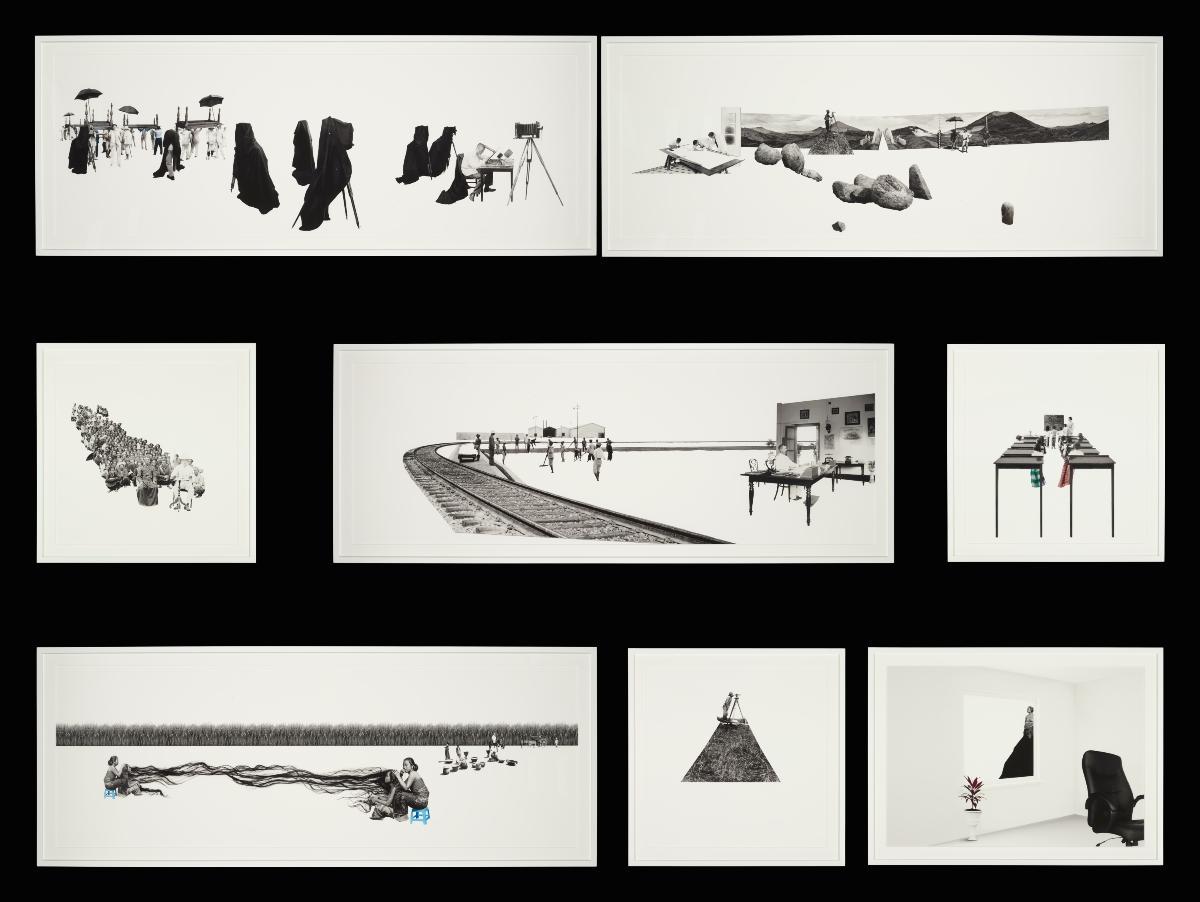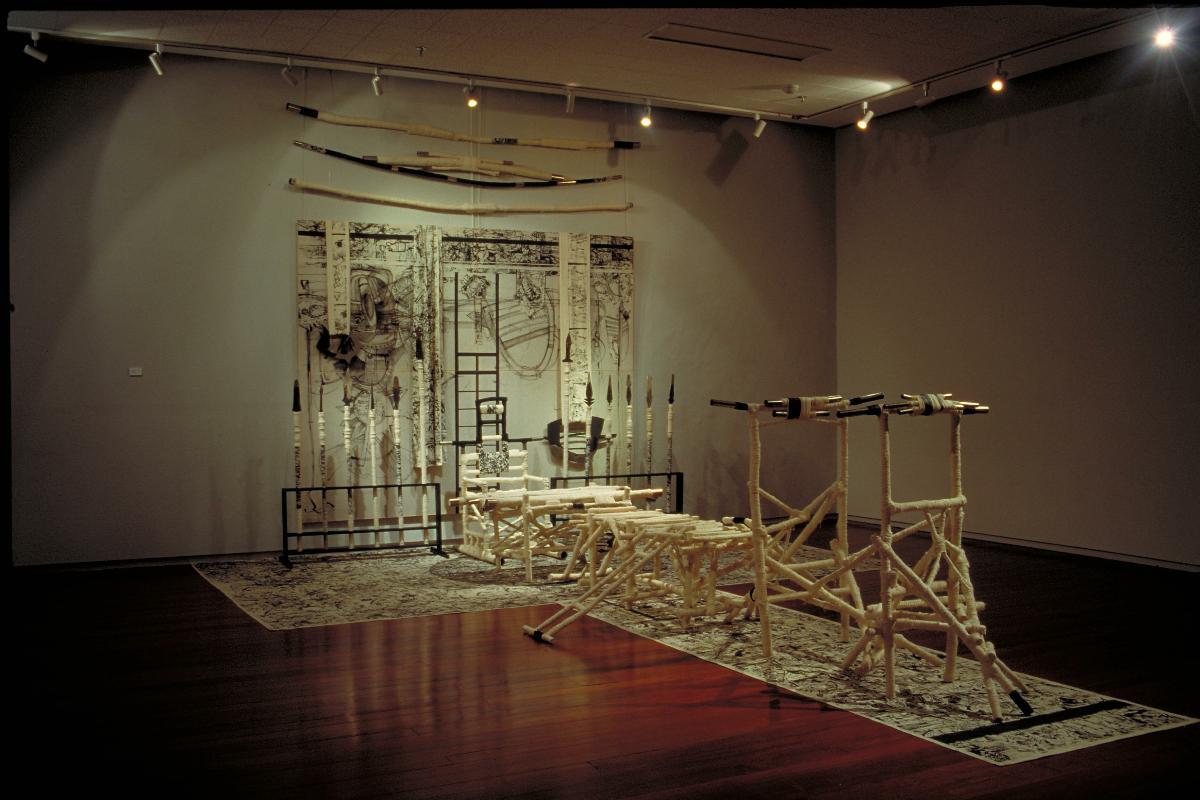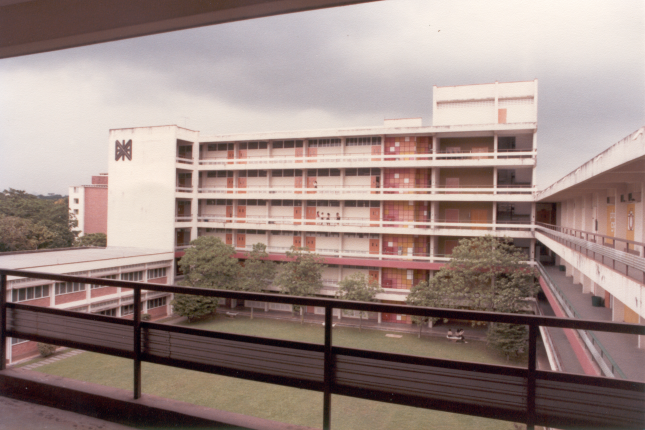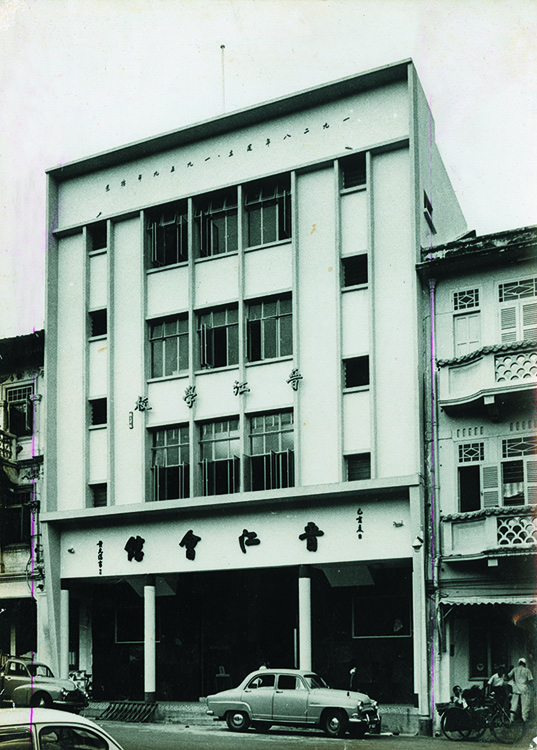Yee I-Lann was born in 1971 in Sabah, Malaysia, and received her BA in Visual Arts from the University of South Australia, Adelaide in 1992, majoring in photography and cinematography. Yee has gained recognition internationally for her distinctive photomedia-based practice, which seeks resonances across history, landscape, memory and cultural identity. Picturing Power is a series of works consisting of eight images that feature archival images from the Tropenmuseum in Amsterdam, an institution founded in 1864 and originally intended to display and research the treasures, products, customs, ways of life of Dutch overseas colonies, in particular Indonesia. Yee culled images from this collection and then, within these images, “un-fixed” selected parts and sections from their existing contexts, creating new scenes as well as new relationships of meaning between different photographic images. Within this “speculative photomontage”, she focuses on the various tools and apparatus that construct and support the creation of new types of knowledge, such as the camera, the telescope, theodolites, surveying tripods, drafting tables, school desks, and different types of chairs. Through this, she evokes various ways that the local or the “native” was seen and conceived of in colonial Southeast Asia. However, her juxtapositions re-cast the relationships between these knowledge-constructing mechanisms and what they visualise and imagine, and unmoor them from conventionally dichotomous ways of understanding power structures. Her calculated use of colour amidst a primarily monochromatic palatte, as well as her use of negative space, throws into relief aspects of the relationship between the colonial administration, local communities and the various documentary and classification mechanisms that support this complex relationship. Through this, the work visually underscores the uneasy, delicate nature of the partnership between photography, control, and social and political power, and prompts viewers to think of other narratives that are subsumed in the face of dominant viewpoints.


















